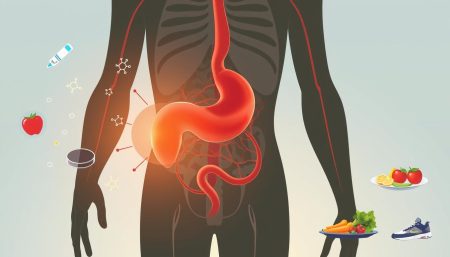For those with diabetes mellitus, health and well-being are top priorities. A diabetes mellitus diet is key to managing blood sugar levels. It turns eating into a strategy for blood sugar control.
This isn’t just about cutting back on food. It’s about choosing healthy eating for diabetes to improve overall health.
Adopting a diabetes mellitus diet does more than control blood sugar. It boosts heart health, helps with weight, and even improves mental health. Choosing foods that help stabilize insulin and energy is vital for any blood sugar control diet.
Starting a healthy eating for diabetes journey takes time and effort. But with persistence and learning, you can make healthy choices that enhance your health and vitality.
Understanding Diabetes Mellitus and Nutritional Needs
Diabetes Mellitus is a complex condition that affects many health areas. It needs a complete management plan. A key part of this is a diabetic nutrition guide to control blood sugar and keep health in check.
What is Diabetes Mellitus?
Diabetes Mellitus is a metabolic disorder that causes high blood sugar levels. It happens when the body doesn’t make enough insulin or can’t use it well. Managing it and making lifestyle changes are key to avoiding serious problems.
The Role of Nutrition in Managing Diabetes
Managing diabetes through diet is more than just eating less. It’s about choosing the right foods. A balanced diet full of nutrients can help prevent diabetes complications and keep blood sugar stable. A nutrient-rich diet can also help with hair health by improving hormonal balance and blood flow.
How Diet Affects Blood Sugar Levels
Knowing how different foods affect blood sugar is key for a diabetic nutrition guide. Foods are ranked by their glycemic index (GI). This index shows how quickly they raise blood glucose levels.
| Food Type | Glycemic Index Range | Impact on Blood Sugar |
|---|---|---|
| Low GI Foods | 0-55 | Slow release of glucose, stable blood sugar |
| Medium GI Foods | 56-69 | Moderate release of glucose, moderate impact |
| High GI Foods | 70-100 | Rapid spike in glucose level |
Following a diabetic nutrition guide means choosing low to medium GI foods. This helps manage blood sugar levels. It also lowers the risk of other health problems.
Key Components of a Diabetes Mellitus Diet
Creating a good diabetic meal plan means knowing about key nutrients. It’s important to understand the role of dietary fiber and the glycemic index. These elements help control blood sugar, which is key to managing diabetes.
Macronutrients: Carbs, Proteins, and Fats
Carbs affect blood sugar levels, so picking the right ones is important. Choose complex carbs like whole grains for their slow digestion. Proteins help repair tissues and should be part of your diet. Eat fats wisely, focusing on unsaturated ones for heart health.
The Importance of Dietary Fiber
Dietary fiber, like soluble fiber, helps manage blood sugar. It slows down carb digestion and prevents spikes in blood sugar. Foods rich in fiber also make you feel full, aiding in weight control.
Glycemic Index and Glycemic Load
Knowing the glycemic index (GI) and glycemic load (GL) of foods helps make better choices. Foods with a low GI raise blood sugar levels slowly. Pairing high GI foods with high fiber ones can help control blood sugar.
- Whole grains like oats and quinoa have low GI
- Legumes, such as lentils and chickpeas, are both high in fiber and low in GI
| Food Item | Glycemic Index | Fiber Content (per 100g) |
|---|---|---|
| Oats | 55 | 10.6g |
| Quinoa | 53 | 2.8g |
| Lentils | 30 | 7.9g |
| Chickpeas | 28 | 7.6g |
How to Create a Diabetic Meal Plan
Managing diabetes starts with good meal planning. It’s about balancing nutrients, watching portion sizes, and eating regularly. Following a diabetic nutrition guide helps control blood sugar and keeps you healthy. Here’s how to make a meal plan for diabetes.
First, talk to your healthcare team for personalized advice. The Centers for Disease Control and Prevention (CDC) say a tailored meal plan is key to managing diabetes well.
- Assess Caloric Needs: Find out how many calories you need each day for your health goals.
- Carbohydrate Counting: Track carbs in your meals to control blood sugar. This helps spread out carbs in your diet.
- Include Variety: Make sure your meals have proteins, fats, and carbs. Eat different foods to meet nutritional needs without raising blood sugar too much.
Portion control is very important in diabetes meal planning. Use measuring cups or compare with your hands (like a fist for carbs or a palm for protein).
- Whole grains (e.g., brown rice, whole wheat bread)
- Lean proteins (e.g., chicken, turkey, and plant-based proteins like beans and tofu)
- Healthy fats (e.g., avocados, nuts, and seeds)
- Fruits and vegetables
Following a diabetic nutrition guide is more than picking the right foods. It’s also about when you eat. Eating at set times helps keep your blood sugar steady. Planning meals ahead can also stop you from choosing unhealthy options.
Starting with diabetes meal planning might seem hard at first. But, with small changes and advice from your healthcare team, it gets easier. It helps you manage your diabetes well.
Top Foods to Include in Your Diabetic Nutrition Guide
Keeping your diet healthy with diabetes means eating a variety of foods. These foods help control blood sugar and offer great nutrition. Here’s a list of top foods for a diabetic diet, along with diabetic-friendly recipes that taste great and are good for you.
- Leafy greens like spinach, kale, and Swiss chard are low in calories and carbs. They’re perfect for keeping blood sugar stable.
- Whole grains such as quinoa, barley, and oats are full of nutrients. They don’t raise blood sugar, which is key for healthy eating for diabetes.
- Legumes like beans, lentils, and chickpeas are high in fiber. This fiber slows down sugar absorption into the blood.
- Fatty fish like salmon, sardines, and mackerel are rich in omega-3s. These fats are good for the heart and help manage diabetes.
- Nuts and seeds, such as almonds and chia seeds, offer healthy fats, protein, and fiber.
Adding these foods to your meals can be easy with simple, diabetic-friendly recipes. For instance, a quinoa and vegetable stir-fry or a chickpea salad with greens and seeds is both tasty and good for blood sugar control.
| Food Category | Examples | Benefits |
|---|---|---|
| Leafy Greens | Spinach, Kale | Low in calories and carbs |
| Whole Grains | Quinoa, Oats | Rich in nutrients, control blood sugar |
| Legumes | Beans, Lentils | High in fiber |
| Fatty Fish | Salmon, Mackerel | Source of omega-3 fatty acids |
| Nuts and Seeds | Almonds, Chia Seeds | Good fats and protein |

For those with diabetes, eating these foods daily is essential for health and wellness. Making meals with these ingredients helps control blood sugar, supports heart health, and aids in weight management. Every meal is a chance to improve your health, making healthy eating for diabetes a key to a vibrant, healthy life.
Foods to Avoid with Diabetes
For people with diabetes, knowing which foods to avoid is key. It helps keep their health in check and blood sugar levels stable. This knowledge is vital for daily diabetes management and long-term health.
High-Glycemic Foods to Limit
High-glycemic foods raise blood sugar quickly. It’s important to limit them to keep blood sugar steady. White bread, refined pasta, and some fruits and snacks are examples to avoid.
Choose low-glycemic foods like whole grains, legumes, and most vegetables. They help control blood sugar better.
Unhealthy Fats and Processed Items
Trans fats and processed foods worsen diabetes-related health issues. Avoid baked goods, fried foods, and items with hydrogenated oils. They can harm blood sugar and heart health.
Adding healthier fats like avocados, nuts, and olive oil is beneficial. They improve your diet and health.
Sugar-Sweetened Beverages and Diabetes Risk
Sugar-sweetened drinks are bad for diabetes management. Sodas, fruit punches, and sweet teas have lots of sugar. They quickly raise blood sugar levels.
Drink water, unsweetened teas, or use natural sweeteners like stevia. They are better for your blood sugar control diet.
By understanding these food categories, you can eat healthier. This reduces blood sugar impact and improves overall health. Making smart food choices is a big step in managing diabetes well.
Diabetic-Friendly Recipes and Meal Ideas
Living with diabetes doesn’t mean you have to give up on tasty meals. From breakfast to dinner, there are many options that help control blood sugar and taste great. The Diabetes Food Hub and the Diabetes & Heart Healthy Cookbook offer great ideas for meals that are both healthy and delicious.
Diabetic-Friendly Breakfast Options
Begin your day with meals that give you energy without raising your blood sugar. Try a bowl of steel-cut oats with fresh berries and flaxseeds. Or, make an omelet with lots of veggies for fiber and protein.
Lunches and Dinners for Blood Sugar Control
For lunch and dinner, choose lean proteins and lots of veggies. A grilled chicken salad with greens, nuts, and vinaigrette is a great choice. Or, try a salmon fillet with roasted Brussels sprouts and quinoa for a balanced meal.
Healthy Snacks for Between Meals
It’s important to keep your energy up all day. Snacks like Greek yogurt with nuts, carrots with hummus, or an apple with almond butter are perfect. They help keep hunger away and prevent blood sugar spikes.
Try out these meal ideas and see how tasty healthy recipes can be.
| Meal Type | Recipe Ideas | Main Ingredients |
|---|---|---|
| Breakfast | Oatmeal with Berries | Steel-cut oats, berries, flaxseeds |
| Lunch | Chicken Salad | Chicken, mixed greens, nuts, vinaigrette |
| Dinner | Salmon and Quinoa | Salmon, Brussels sprouts, quinoa |
| Snacks | Yogurt and Nuts | Greek yogurt, mixed nuts |
Managing Diabetes Through Diet and Lifestyle
Managing diabetes is more than just what you eat. It’s about how you live too. A good diabetic meal plan is key to keeping blood sugar stable. But, adding regular exercise and managing stress is just as important.
This mix of diet, exercise, and stress control helps control diabetes better. It shows how diet, activity, and mental health are all connected.
Exercise as a Companion to Dietary Management
Exercise is key for diabetes management. It helps lower blood sugar by moving glucose to muscles for energy. This reduces insulin work.
Regular exercise also keeps weight healthy, boosts insulin sensitivity, and improves heart health. Even a 30-minute walk a day can help a lot.
Stress Management Techniques
Stress affects blood sugar levels. Stress hormones can raise glucose. To fight this, try meditation, yoga, or deep breathing.
These practices help keep blood sugar stable. They also improve mental and physical health, supporting your diet efforts.
The Role of Consistent Meal Times
Eating at the same times each day helps control blood sugar. It keeps your body in sync with insulin use. A set meal schedule, with a balanced diet, makes managing blood sugar easier.
Diabetic Diet Tips for Eating Out
Eating out with diabetes can be tough but doable with some planning. The secret to a healthy diet when you’re out is making smart choices. This way, you can stick to your diabetic nutrition guide and meal planning, even when you’re not cooking at home.
Making Smart Menu Choices
Go for dishes with lots of veggies, lean proteins, and whole grains. Steer clear of crispy, fried, or creamy foods. Ask for sauces and dressings on the side. Choosing steamed, broiled, or grilled options helps keep calories and fats in check.
Tips for Portion Control
Restaurant portions are often too big. You can ask for a smaller portion or share a meal. Or, save some for later to avoid eating too much.
Drinks and Desserts: Navigating the Challenges
Drinks and sweets can hide a lot of sugar and fat. Stick to water, unsweetened tea, or a glass of wine. If you want dessert, choose something light like sorbet or a fruit dish.
| Dining Out Choice | Impact on Diabetic Diet | Suggested Alternatives |
|---|---|---|
| Fried foods | High in fats and calories | Opt for grilled or steamed options |
| Cream-based soups | High in fat and often in sodium | Choose broth-based soups with lots of vegetables |
| Sugary desserts | Spike in blood sugar levels | Fresh fruit or shared portions of desserts |
| Alcoholic cocktails | High sugar content and empty calories | Limit to one glass of wine or light beer |
Diabetes Meal Planning for Special Occasions
Special occasions can tempt us with rich foods and drinks. But, with the right planning, people with diabetes can enjoy these moments healthily. A diabetic meal plan should be flexible, allowing for healthy choices that fit into a balanced lifestyle.
Navigating Holidays and Festivities
Planning is key during holidays. Knowing the menu helps choose the right foods and portion sizes. It’s also wise to eat a small, balanced meal before big events to avoid overeating.
Alcohol Consumption and Diabetes
Alcohol can change blood sugar levels and affect diabetes meds. Drinking in moderation is important. Choose drinks with less sugar or dilute them with club soda. Always talk to a doctor about alcohol limits.
Healthy Alternatives to Traditional Favorites
It’s important to find healthy swaps for high-sugar or high-fat foods. Choose whole grains over white flour, natural sweeteners like stevia, and lean proteins instead of fatty meats.
| Traditional Food | Healthy Alternative | Benefits |
|---|---|---|
| Potato Salad | Cauliflower Salad | Lower glycemic index, fewer carbs |
| Fried Chicken | Grilled Turkey Breast | Fewer calories and fats |
| Ice Cream | Greek Yogurt with Berries | More protein, less sugar |
The Importance of Regular Monitoring and Adjustments
Managing diabetes through diet is more than just following a meal plan. It’s about watching your health closely and making changes as needed. This keeps your blood sugar in check, which is key for those on a blood sugar control diet.
Checking your blood glucose regularly is a must. It shows how well your diet is working and when you might need to tweak your food choices. Making quick changes to your diet can greatly help control your glucose levels every day.
- Regular glucose testing to identify patterns and variances.
- Dietary adjustments based on glucose readings.
- Consultation with healthcare providers to contextualize data and refine diet plans.
It’s important to have a plan for managing diabetes through diet. Keeping a food diary or using a digital app can be really helpful. They help you track what you eat and how it affects your blood sugar, guiding you to make better choices.
| Tool | Description | Benefit |
|---|---|---|
| Food Diary | A manual or digital log of daily food intake | Helps track patterns and impact on blood sugar levels |
| Digital Food Tracker | Apps that log dietary intake and sync with glucose monitoring devices | Streamlines data gathering, offers real-time analytics |
It’s not just about what you eat, but how you adapt to changes. Learning about food’s nutritional value and glycemic index is key for those on a blood sugar control diet. Also, working with healthcare professionals can offer personalized advice, keeping your diet on track with your health goals.
The journey of managing diabetes through diet is ongoing and changes over time. Regular visits to your healthcare provider are essential. They help you see how well your diet is working and provide the education and support you need for long-term management and well-being.
Balancing a Diabetes Mellitus Diet with Medications
Managing diabetes well means combining diet, exercise, and medicine. A good diabetic nutrition guide is key for controlling diabetes, along with the right medicines. We’ll look at how food choices can help or hurt the effect of diabetes drugs. This includes meal timing and knowing when blood sugar is too low.
How Diet Interacts with Diabetes Medications
What you eat can change how well diabetes drugs work. Some foods might slow down or speed up how drugs are absorbed. For example, eating a lot of fiber can slow down insulin absorption, affecting blood sugar levels.
This is important for people taking Ozempic. It works by mimicking a hormone that helps control insulin, as explained on this website.
Timing Meals with Medication Schedules
Matching meal times with when you take your medicine can keep blood sugar levels stable. For those on insulin or drugs that help insulin, eating carbs with meals can help control blood sugar better. Following a diabetic diet schedule not only makes medicines work better but also keeps energy levels steady all day.
Understanding Hypoglycemia and Food Intake
Hypoglycemia, or low blood sugar, is a big risk for diabetics, mainly those on insulin or sulfonylureas. It’s important to know how food and timing can prevent low blood sugar. Eating balanced meals with the right carbs and checking blood sugar before and after eating are key steps in managing hypoglycemia.
| Medication Type | Recommended Nutrient Timing | Notes |
|---|---|---|
| Insulin | Carbohydrates within 30 minutes of injection | Helps prevent severe hypoglycemia |
| Sulfonylureas | Consistent carbohydrate intake during meals | Minimizes risk of blood sugar drops |
| GLP-1 Agonists (e.g., Ozempic) | Light, low-fat meals | Enhances slow gastric emptying effect |
Diabetes Mellitus Diet as a Tool for Prevention
Starting a diabetes mellitus diet is a smart way to stop pre-diabetes from turning into diabetes. By eating healthily, people at risk can lower their chance of getting this serious disease.
Preventative Measures for Pre-diabetes
For those with pre-diabetes, starting a diabetes diet early is key. Eating foods with low glycemic levels and watching carbs can keep blood sugar stable. This helps prevent diabetes from happening.
Supporting Family Members with a High Risk
If a family member is likely to get diabetes, changing diets together can help. Eating healthily as a family supports the person at risk. It also promotes a healthy lifestyle for everyone.
Lifestyle Changes that Can Make a Difference
Changes like more exercise, enough sleep, and managing stress are also important. These, along with a diabetes mellitus diet, help the body handle blood sugar better.
| Change | Benefit |
|---|---|
| Increased Fiber Intake | Helps regulate blood sugar levels |
| Regular Physical Activity | Improves insulin sensitivity |
| Consistent Eating Schedule | Prevents sudden spikes in blood glucose |
| Stress Reduction Techniques | Lowers the likelihood of insulin resistance |

Nutrition Education and Support Resources
For those with diabetes, getting the right nutrition help is key. A good diabetic meal plan and following a diabetic nutrition guide need expert advice. This advice helps you stay on track with your diet.
The American Association of Diabetes Educators and the National Diabetes Education Program are big helps. They offer lots of info on how to eat right with diabetes. Their materials teach about the special nutrition needs for diabetes.
- One-on-one nutritional counseling
- Group classes and workshops on diabetic meal planning
- Online resources and support forums
- Tools for tracking dietary intake and blood sugar levels
Using these services can really help you manage your diabetes better. It gives you more control and makes you feel better.
| Service | Description | Provider |
|---|---|---|
| Nutritional Counseling | Personalized guidance on nutrition and meal planning | American Association of Diabetes Educators |
| Diabetes Workshops | Interactive group sessions focusing on diet management | National Diabetes Education Program |
| Online Support Forums | Communities for sharing experiences and advice | American Association of Diabetes Educators |
| Dietary Tracking Tools | Digital tools to help monitor food intake and blood sugar | National Diabetes Education Program |
Advanced Considerations in a Diabetes Mellitus Diet
When planning meals for diabetes, it’s important to make a diet that fits your health needs. The International Journal of Endocrinology shows that a diet tailored to you is key. It should help manage your diabetes and meet your health goals, like losing weight or controlling blood sugar.
Studies in Diabetes, Metabolic Syndrome and Obesity: Targets and Therapy also highlight the importance of considering your lifestyle. Your diet should change as your health and activity levels do. This way, you can manage your diabetes better and improve your overall health.
Understanding how your body reacts to food is also vital. With tools like continuous glucose monitoring, you can see how your diet affects your blood sugar. This helps you make better food choices and fine-tune your diet for long-term health.
FAQ
Q: What is a diabetes mellitus diet?
A: A diabetes mellitus diet is a special eating plan. It helps control blood sugar levels and promotes healthy eating. It includes the right mix of nutrients and understanding the glycemic index.
Q: Why is nutrition important in managing diabetes mellitus?
A: Nutrition is key in managing diabetes. It affects blood sugar levels. Choosing the right foods can help control glucose and prevent complications.
Q: How does diet influence blood sugar levels?
A: The diet you choose affects your blood sugar. Carbs, proteins, and fats can raise or lower blood sugar. Eating a balanced diet keeps blood sugar stable.
Q: What are the key components of a diabetes meal plan?
A: A good meal plan includes carbs, proteins, and fats in the right amounts. It should also have lots of fiber. Knowing the glycemic index of foods is important for managing blood sugar.
Q: How can I create a diabetic meal plan?
A: To make a meal plan, think about how often you eat and portion sizes. Choose foods that are good for you and keep your blood sugar in check.
Q: What foods should I include in my diabetic nutrition guide?
A: Include foods low on the glycemic index and rich in fiber. Choose lean proteins and healthy fats. Fruits, veggies, whole grains, nuts, and seeds are great choices.
Q: What are some foods to avoid with diabetes?
A: Avoid foods high in sugar and unhealthy fats. Also, limit processed foods. These can raise blood sugar levels and are not good for your health.
Q: Can you suggest some diabetic-friendly recipes?
A: Yes! Try dishes with low-glycemic ingredients and healthy fats. Grilled chicken with quinoa and steamed broccoli, or a lentil salad with veggies and vinaigrette, are good options.
Q: How does exercise complement dietary management of diabetes?
A: Exercise improves insulin sensitivity, helping control blood sugar. It also helps with weight management and reduces heart disease risk. Exercise and a balanced diet are key for managing diabetes.
Q: What tips are there for eating out with diabetes?
A: When eating out, choose dishes with lots of veggies, lean proteins, and whole grains. Ask for dressings on the side and opt for grilled or baked foods. Be mindful of portion sizes to manage blood sugar.
Q: How should I plan meals for special occasions?
A: Plan ahead by checking menus or bringing a healthy dish. Choose foods that fit your meal plan and monitor carb intake. Enjoy special treats in moderation.
Q: Why is regular monitoring and adjustments important in a diabetes mellitus diet?
A: Regular monitoring helps you see how foods affect your blood sugar. It lets you make diet adjustments to keep blood sugar in control and prevent complications.
Q: How should I balance my diet with diabetes medications?
A: Work with your healthcare provider to understand your medication’s effects. Time your meals with your medication to improve its effectiveness and prevent low blood sugar.
Q: Can a diabetes mellitus diet be used for prevention?
A: Yes, a diabetes-friendly diet can help prevent pre-diabetes and high-risk conditions. It promotes healthy blood sugar levels and overall wellness.
Q: Where can I find nutrition education and support for diabetes?
A: You can find education and support from certified diabetes educators and the American Association of Diabetes Educators. The National Diabetes Education Program and online resources are also good places to start.
Q: What are some advanced considerations in a diabetes mellitus diet?
A: Advanced considerations include tailoring your diet to your health goals. Stay updated on diabetes research and adjust your meal plan for unique medical needs.


















